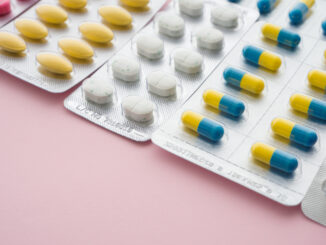Pharmaceutical take-back bins keep communities safe and clean.
We talked to Spencer Silverstein, sustainability analyst with the City of Thousand Oaks’ Public Works Department, to get an idea how they help.
“I think one of the really positive points of this program is that it’s user friendly.”
Spencer Silverstein, Sustainability analyst, Thousand Oaks Public Works Department
How do pharmaceutical take-back bins benefit the communities they’re in?
Keeping these medications out of the hands of the nonprescribed people who ingest them is a paramount concern, especially because of the potential for abuse and or addiction. It can even be accidental ingestion by children or pets.
There’s the potential for theft because they do have street value, so there’s the nefarious criminal activity that exists with them. And there are the environmental impacts. Our wastewater treatment plants are not designed to accept those types of incoming materials in wastewater streams. Many pharmaceuticals end up bioaccumulated in the water supply.
Why did Thousand Oaks implement the Med Bin program?
We were aware there was only one bin in the city for medications for 130,000 residents. That doesn’t really meet the convenient standard that should exist for take-back programs.
It was becoming problematic for [the Thousand Oaks Police Department] to manage it. This program really introduced a financial and operational process that they value, so much so that my contact at the Thousand Oaks Police Department [implemented it] throughout the rest of the sheriff’s department and county and there are five or six additional bins throughout the county at other law enforcement offices.
What kinds of materials can the bin accept?
Prescription medications, over-the-counter medications, and any type of medicated ointments or lotions. We instruct the public to tightly seal them in their original containers. Any type of pet medications and any type of schedule II through IV controlled substances, such as oxycodone, codeine, amphetamines.
What types of materials can’t be left in the take-back bins?
The bins are not designed for medical sharps or other types of hypodermic needles, syringes, auto-injectors like Epi-Pens. Any iodine containing medications are not meant to be disposed of in the bins, same with thermometers, mercury or non-mercury types. And we certainly don’t want anything in a compressed-gas cylinder like asthma inhalers.
What are host sites responsible for doing?
I think one of the really positive points of this program is that it’s user friendly. Essentially, you apply to be a host site, and the bin is funded for you, it’s dropped off at your location, it’s ready to go with all the signage and everything on it, instructions, etc. Once the bin is full, staff at the host site unlocks the front door, takes the box full of medications out, seals it without having to touch anything inside, orders the pick-up and you’re done.
Is there any assistance available for host sites?
Sites can contact Drug Takeback Solutions Foundation (https://www.takebackfoundation.org/) and MED-Project (https://med-project.org/).
For more info about medication take-back bins, visit https://spotlight.newsreview.com/dont-rush-to-flush/.
To learn about California Product Stewardship Council’s many programs, visit https://www.calpsc.org/.
Written by Anne Stokes


